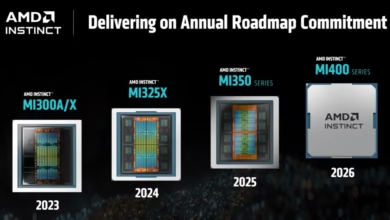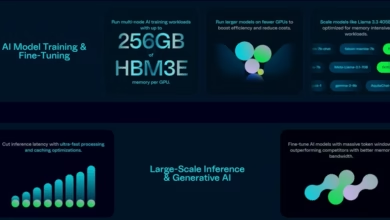CISOs: The Key Players in $309B AI Infrastructure Boom

▼ Summary
– Enterprise AI infrastructure spending is projected to hit $309 billion by 2032, with success hinging on controlling the operational infrastructure layer rather than just having the best models.
– Security vendors like Palo Alto Networks and CrowdStrike are leading AI adoption, with AI-driven security revenue growing 70-80% annually as traditional infrastructure sales decline.
– AgenticOps has emerged as a critical new category, addressing the need for infrastructure that can manage AI agents at scale, with Cisco, Microsoft, and Google among key players racing to dominate it.
– Traditional perimeter security is failing for AI workloads, prompting a shift to solutions like eBPF and hardware-accelerated security, which offer million-fold performance improvements.
– The AI infrastructure market is rapidly consolidating, with Gartner predicting 60% of current vendors will disappear by 2027, favoring those who control full-stack solutions.
The rapid expansion of AI infrastructure is reshaping enterprise security, with spending projected to hit $309 billion by 2032. Success in this evolving landscape hinges not just on advanced models but on robust infrastructure capable of scaling AI securely. Security leaders are now at the forefront, driving innovation as traditional IT frameworks struggle to keep pace.
Recent data reveals a striking trend: AI-driven security revenue is surging 70-80% annually for major players like Palo Alto Networks, CrowdStrike, and Cisco, even as conventional infrastructure sales decline. This shift underscores a fundamental truth, security is no longer just a safeguard but the backbone of enterprise AI deployment.
Ali Ghodsi, CEO of Databricks, highlights the challenge: “AI workloads are pushing existing systems to their limits, demanding entirely new approaches to scalability and governance.” Enterprises face a harsh reality, 73% cite inadequate infrastructure as their biggest roadblock to AI adoption, while cyber threats evolve faster than defenses can keep up.
AgenticOps: The New Frontier
The stakes are high. Deploying 50,000 AI agents requires infrastructure that supports real-time governance, cross-domain data access, and seamless collaboration, capabilities most legacy tools lack. Jeetu Patel, Cisco’s President and CPO, notes a paradigm shift: “Security is now an enabler, not a barrier, accelerating AI adoption instead of hindering it.”
Three critical pillars define enterprise-grade AgenticOps:
- Unified data access across all domains
- Collaborative environments bridging NetOps and SecOps
- Purpose-built models governing agent behavior
Vendors mastering these elements will dominate, but few currently deliver even one effectively.
The Fall of Perimeter Security
eBPF (Extended Berkeley Packet Filter) has revolutionized security enforcement, eliminating the performance overhead of traditional methods. Cisco’s $2.8 billion acquisition of Isovalent underscores its importance, with Cilium, Isovalent’s open-source project, securing giants like Netflix and Capital One.
Craig Connors, Cisco’s CTO of Security, explains: “Security must span every layer, from workload to silicon.” Hardware-accelerated security, operating at nanosecond latency, is now non-negotiable, vendors lacking silicon integration simply can’t compete.
The 72-Hour Exploit Crisis
CrowdStrike’s Falcon Prevent blocks zero-day exploits, Qualys VMDR offers real-time vulnerability management, and Tanium Patch delivers fixes in under an hour. Every delayed hour costs $84,000 in breach risk, making automated solutions essential.
Shlomo Kramer, CEO of Cato Networks, stresses: “Speed is survival in cybersecurity, automation isn’t optional when human response times are too slow.”
Observability: The Make-or-Break Factor
Etay Maor of Cato Networks warns: “You can’t secure what you can’t see.” The next leap? Generative UI, where AI crafts dynamic interfaces in real-time, replacing static dashboards within two years.
Market Consolidation Accelerates
Gartner predicts 60% of current vendors will disappear by 2027, leaving fewer than 20 dominant platforms. The message is clear: Control the full stack or become obsolete.
The Bottom Line
The race is already underway: Cisco, Palo Alto, Microsoft, and emerging innovators are vying to define the next decade of enterprise AI infrastructure. The winners won’t just lead; they’ll redefine the rules of the game.
(Source: VentureBeat)






